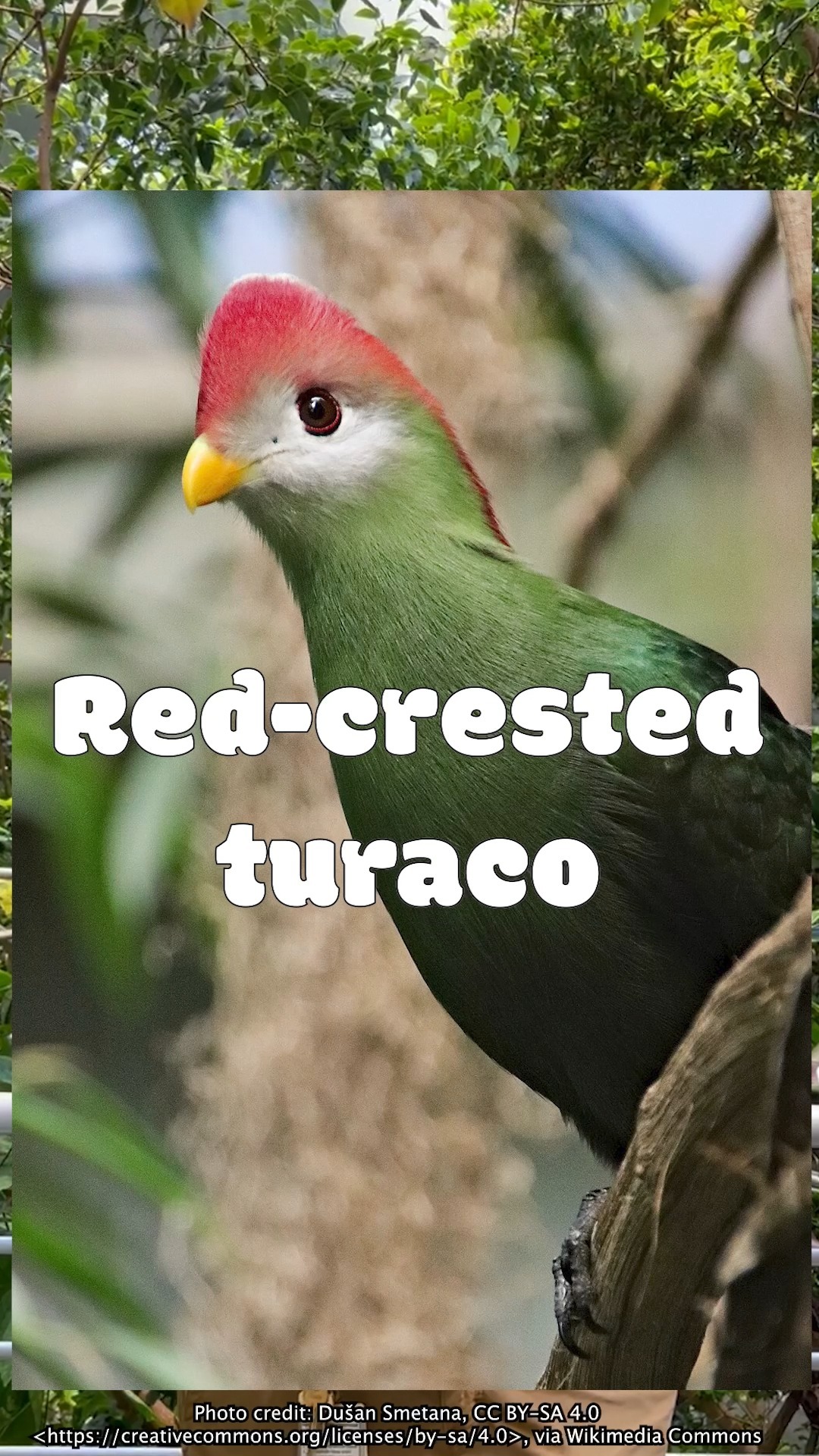- Introduction of Scarlet and Skittles, red-crested turacos, to the Osher Rainforest habitat
- The role of Species Survival Plans in wildlife conservation
- Turaco behavior and social structures in a captive environment
- Adaptive measures for turacos in zoological settings
- Impact of educational programs featuring exotic birds on public engagement and conservation efforts
The Osher Rainforest at the Academy recently became the new home for two striking red-crested turacos, Scarlet and Skittles. These vibrant birds, with lustrous green plumage and a distinct crimson crest, are captivating to behold and symbols of conservation efforts aimed at protecting endangered species through carefully managed breeding programs known as Species Survival Plans (SSPs).
Species Survival Plans are cooperative, inter-zoo programs coordinated nationally through accredited zoos to ensure the survival of selected wildlife species. The introduction of Scarlet and Skittles is part of this important initiative, which focuses on genetic diversity and healthy population management for threatened species in the wild. Participating institutions collaborate to make breeding recommendations, move animals between facilities, and share research to improve conservation outcomes.
Red-crested turacos, scientifically known as Tauraco erythrolophus, originate from the forests of Angola and are known for their monogamous pair bonds and social groups. Observing Scarlet and Skittles provides insight into turaco behavior, such as their intricate courtship rituals, grooming habits, and caring for their offspring. Understanding their behavior in captivity is essential for their welfare and simulating conditions close to their natural habitat.
Adapting to a captive environment is crucial for the survival of species like turacos. Zoological parks focus on replicating the birds’ natural habitat as closely as possible to encourage natural behaviors. This includes designing spacious aviaries with ample foliage, varied perching options, and a diet rich in fruits, insects, and greens that mirrors their wild feeding habits. Enrichment activities, such as foraging toys and varied landscaping, stimulate their natural behaviors and help reduce stress.
Education is vital when new birds like Scarlet and Skittles are introduced to the public. These turacos serve as ambassadors for their species, sparking curiosity and empathy among visitors. Educational programs can convey the importance of habitat preservation, the dangers of deforestation and the pet trade, and the role of zoos in safeguarding biodiversity. When visitors establish a connection with the individual animals they encounter, they are more likely to support conservation efforts and adopt environmentally responsible behaviors.
The arrival of Scarlet and Skittles exemplifies the combination of scientific knowledge, conservation action, and public education that is fundamental to the success of modern zoos and wildlife sanctuaries. By hosting and caring for these red-crested turacos, the Osher Rainforest provides an opportunity for people to appreciate the beauty of rare avian species. It fosters greater awareness and support for wildlife conservation worldwide. Through these efforts, the Academy plays a significant role in advocating for preserving our planet’s incredible biodiversity for generations to come.
*****
Source Description
New birds just dropped! Academy biologist @sparksperkins introduces Scarlet and Skittles, two (ridiculously beautiful) red-crested turacos who’ve just joined our Osher Rainforest. Come say hello! (And learn more about the Species Survival Plan via link in bio.)

